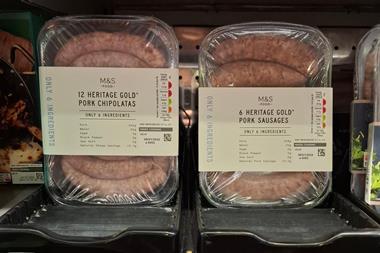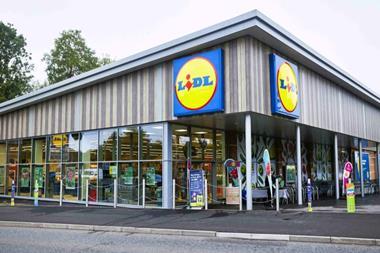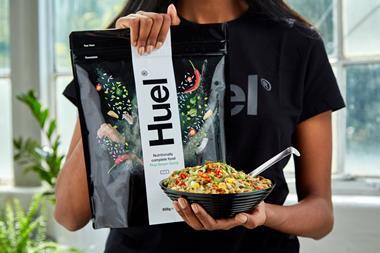Amazon is walking back on its Just Walk Out technology. After heralding it as a development that would “push the state of the art forward” to “reimagine the in-store shopping experience” and “redefine retail”, the company has decided, actually, nah, and is stripping the tech out of its US stores.
The move – spearheaded by Amazon’s global grocery stores chief, Tony Hoggett, who ended a 30-year career at Tesco to accept the role – will see “version two” stores rolled out Stateside sans Just Walk Out.
Amazon told The Grocer the decision was completely driven by what customers wanted. Shoppers “enjoyed the benefit of skipping the checkout line” enabled by Just Walk Out, but ultimately “wanted the ability to easily find nearby products and deals, view their receipt as they shop, and know how much money they saved while shopping throughout the store”.
Such delights are offered by Amazon’s Dash Cart, which is essentially a trolley with a self-scan device and touchscreen stuck on it. But notably, the revised standard store design will come with self-scan and manned till options.
The suggestion that customer preference drove a scale of this magnitude is likely to be only partly true. Cost may well have been another key motivation. After all, rolling out Just Walk Out is a resource and capital-heavy effort, even for the profoundly deep-pocketed Amazon. Fitting out a space with swish cameras, weighted shelves and computers isn’t cheap. Retrofitting an existing store with them even less so.
Add to that the intensive machine learning task to recognise humans and products being picked up, put back, added to a bag, put back on a different shelf, passed from one person to another and so on, and the costs quickly shoot up. There have been doubts whether it all worked that well anyway. The Information last year reported the tech actually relied on more than 1,000 people in India manually watching and labelling videos to make the magic happen. As several wags on X put it: Turns out AI stands for “An Indian”.
And Amazon is not feeling invincible at the moment. Last year, the company shuttered warehouses and its non-food physical retail stores, and laid off the most people in its history. This was all in pursuit of “our long-term opportunities with a stronger cost structure” said CEO Andy Jassy at the time. In such cost-conscious times, no doubt its grocery play will come into sharper focus. Despite all the hype, it’s far from a success, and online Chinese giants like Temu loom large.
In summary: it’s prime time to make tough decisions and call quits on Just Walk Out. As Hoggett said an interview with The Grocer last year: “Not everything you do in grocery needs reinventing. There are proven things grocers are doing. But you don’t really know about them until you’ve worked in the industry for a long time.”
So does Amazon’s ditching of Just Walk Out signal its downright demise?
Not quite. The move only applies to the larger format Amazon Fresh stores. Not the UK smaller format stores, which are confusingly also branded Amazon Fresh. Or at least, they won’t undergo any changes “at this time”, according to an Amazon spokeswoman. The smaller format Amazon Go stores in the US will also maintain the tech. As will the slew of third-party adopters, of which there is a growing base: among them Sainsbury’s, SimplyFresh, the ExCeL centre, WH Smith and several hospitals.
“The bigger stores get, the harder it is to get a system like Just Walk Out to work – not just from the number of products to recognise individually, but also to justify the infrastructure cost,” Deliveroo grocery product director Paul Wilkinson posted on LinkedIn. “In stores where using a cart doesn’t make sense due to the customer mission, like most of the UK based Amazon Go/Fresh stores as well as the first ones in Seattle and New York, then I’m sure they will keep using Just Walk Out.”
Arguably, the smaller the format, the more it makes sense to use the technology. Take The SSE Arena in Belfast which last month announced its Pay & Away store powered by Just Walk Out. There, punters can quickly grab an interval snack and pint with no fuss.
And there are plenty more opportunities like it. “Apply this to busy travel hubs, sports stadia, or workplace grab ‘n’ go cafés, and you can see where there might be demand,” says PwC senior retail advisor Kien Tan.
But what of the Amazon Fresh UK stores? The technology has certainly proved a media-friendly gimmick. Do customers dig it? Is it actually all that frictionless?
“During the times I spent in and around checkout-free stores, a staff member was employed to stand at the door and explain the technology to people,” says retail tech commentator Jamie de Lima. “When customers walked in, they were greeted by barriers and being told to install an app, create an Amazon account, add a payment card and scan a QR code – it sounded like an alien language to many of them.
“Most people are simply not technically savvy, and this lead to counterproductive results – the thought of all of this fuss was so unappealing it added friction to the process. Instead of changing their behaviour and learning how to use Amazon’s system, they chose to ‘just walk out’ and head to a normal store instead,” he adds.
In a high street setting, where there are countless other ways to grab a quick lunch or extra bits for tonight’s dinner, it will take more than gimmicks to get people through the door more than once. Amazon, which says it is “working hard to identify the right offering to scale”, will doubtless have put Just Walk Out on notice in a convenience store format. But for larger format stores, at least, it makes sense to remove a costly distraction from its effort to properly compete with the major grocery players.
While it might be seen as a sign of defeat, the tricky call on Just Walk Out makes clear Amazon isn’t just playing around with its flashy toys in a new category. Rather, it is serious about success in grocery. Just What Now?

























No comments yet